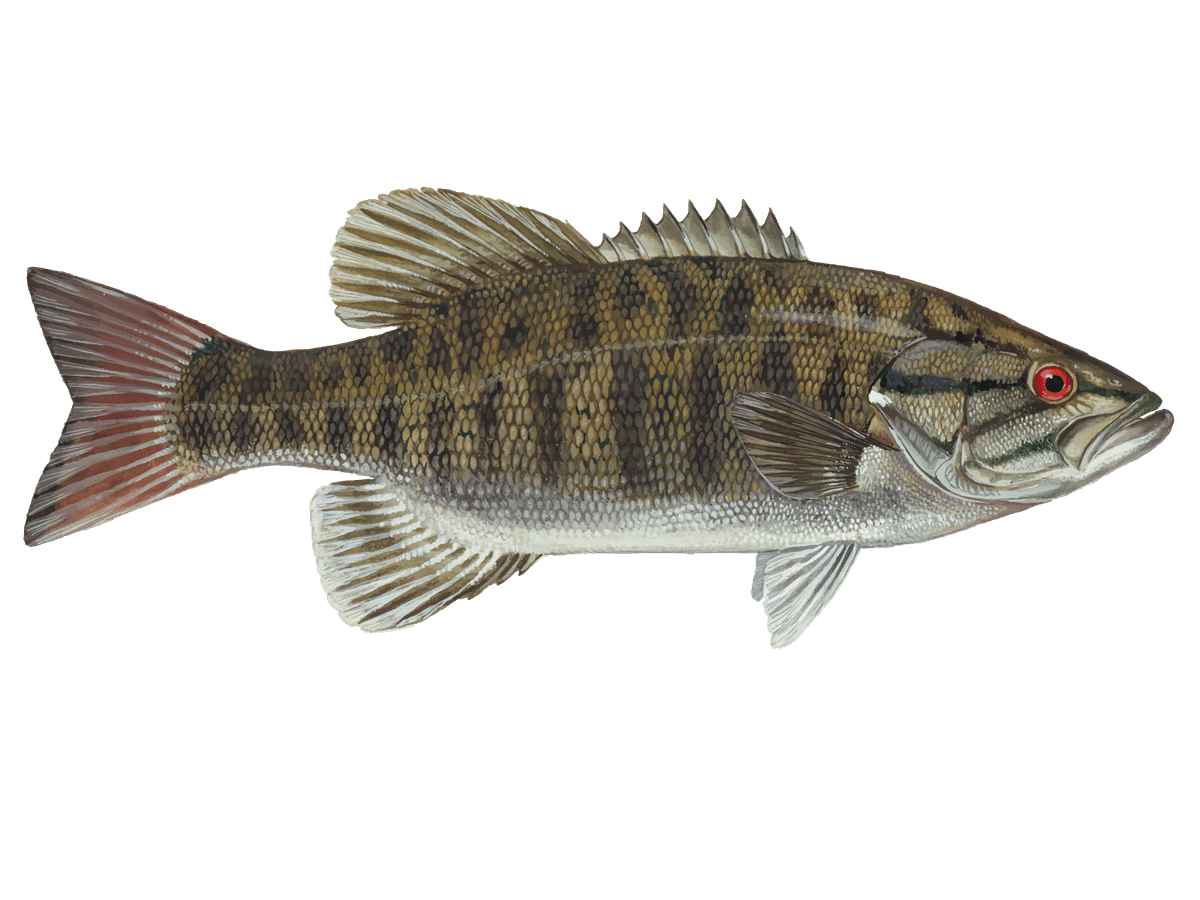Premier Family Fishing on Lake Texoma
- Published Date: August 31, 2025
- Fishing
- Lake Texoma
- $450 price range
Summary
%2F%2Fusers%2F38e22c63-9055-448f-971c-98b29de0944b%2Fratecard%2F470065933_122128842758460513_3575260575573082119_n.jpg&w=1200&q=75)
Reeling Them In


Family Fun Fishing on Lake Texoma
Get ready for a laughter-filled day on the water with Captain Graysen Freeman's half-day fishing trip on Lake Texoma. This 4-hour adventure is perfect for families looking to reel in some memories together. You'll be targeting catfish, stripers, and smallmouth bass using easy-to-learn techniques that even the littlest anglers can master. Hop aboard the spacious 30-foot center console boat and let the good times roll!
What to Expect on the Water
From the moment you step on the boat, Captain Graysen's friendly demeanor sets the tone for a relaxed and fun-filled outing. He's got a knack for keeping everyone engaged, from seasoned anglers to first-timers. The custom 30-footer offers plenty of room to move around, cast lines, and enjoy the scenic beauty of Lake Texoma. You'll cruise to some of the captain's favorite fishing spots, where the action is often hot and the fish are biting. Kids will love the thrill of feeling that first tug on the line, while parents can sit back and soak in the quality time with their little ones. Don't be surprised if you hear more giggling than fish splashing – that's just par for the course on this family-friendly trip!
Fishing 101: Lake Texoma Style
Captain Graysen's got all the gear and know-how to make this trip a success, even if you've never held a fishing rod before. He'll show you the ropes on simple yet effective techniques perfect for Lake Texoma's fishy residents. You might start with some good old-fashioned bottom fishing for catfish, using stinky bait that the kids will love (or hate) to touch. For stripers and smallmouth bass, you could try trolling or casting lures – methods that keep everyone active and involved. The captain's got a sixth sense for where the fish are hiding, and he'll share tips on reading the water and spotting signs of activity. By the end of the trip, don't be surprised if your kiddos are giving you pointers on how to reel 'em in!
Top Catches This Season
Lake Texoma's been serving up some real beauties lately. Families have been hauling in chunky blue catfish, feisty stripers, and hard-fighting smallmouth bass. One young angler recently landed a catfish nearly as big as she was – talk about a photo op! Another group had a blast reeling in a whole school of stripers, with fish flopping into the boat left and right. It's not just about the size of the catch, though. The real magic happens when you see a kid's face light up after landing their very first fish, or watch siblings work together to net a big one. These are the moments that make Captain Graysen's job the best in the world.
Species You'll Want to Hook
Lake Texoma is home to some real crowd-pleasers when it comes to fish. Let's dive into the stars of the show:
Smallmouth Bass: These bronze bombers are the athletes of the lake. Known for their acrobatic fights, smallmouth bass will give you a run for your money once hooked. They love to hang out near rocky areas and points, ambushing their prey with lightning-fast strikes. Spring and fall are prime times to target these feisty fish, but they're active year-round. Kids love catching smallies because of their energetic battles – it's like reeling in a little torpedo!
Blue Catfish: The gentle giants of Lake Texoma, blue cats can grow to massive sizes. These whiskered wonders are bottom-dwellers, using their sensitive barbels to sniff out food in the murky depths. They're most active in the warmer months, but winter can produce some real monsters for those willing to brave the cold. Blue cats are perfect for young anglers because they often provide a steady bite and don't require complicated techniques to catch. Plus, there's something magical about pulling up a fish bigger than your little one – the looks on their faces are priceless!
Striped Bass: Often called "stripers," these hard-fighting fish are like the freight trains of the lake. They school up and chase bait fish, creating exciting topwater action that's a blast to fish. Stripers can grow quite large in Lake Texoma, with some topping 20 pounds or more. Spring and fall are excellent times to target them, but summer can produce some epic early morning and late evening bites. Catching stripers is all about teamwork – perfect for families working together to land the big one!
Why Anglers Keep Coming Back
There's something special about fishing Lake Texoma with Captain Graysen that keeps families returning year after year. Maybe it's the way he patiently teaches little ones to bait their hooks, or how he always seems to know just where the fish are biting. Perhaps it's the inside jokes that develop over a day on the water, or the pride in a child's eyes when they reel in their biggest catch yet. Whatever the reason, this trip has become a tradition for many families, creating memories that last long after the fish tales have been told (and grown taller with each retelling).
Time to Book Your Spot
Ready to create some fishy memories of your own? Captain Graysen's half-day family fishing trips on Lake Texoma are the perfect way to unplug, bond, and have a boatload of fun. Whether you're looking to introduce the kids to fishing or just want a relaxing day on the water, this trip delivers. Remember to bring your fishing license, some snacks, and plenty of sunscreen. Oh, and don't forget the camera – you'll want to capture those proud smiles and big catches! Spots fill up fast, especially during peak seasons, so don't wait to book your adventure. Give Captain Graysen a call and get ready for a day of laughter, learning, and hopefully, lots of fish. Who knows, you might just spark a lifelong passion for fishing in your little ones. See you on the lake!
Learn more about the species
Blue Catfish
Blue Catfish (Ictalurus Furcatus) Fish Description
Blue Catfish are known for their slate-blue bodies. However, they are often mistaken for the Channel Catfish because of their appearance. To identify them, people usually count the rays on their fins. Blue Catfish only have 30-36 rays on their fins. Another is to look closely at the anal fin. Blue Catfish’s anal fin has a squared-off edge whereas Channel Catfish have a rounded anal fin. They also have a dorsal hump which the Channel Catfishes don’t really have.
Known also as Blue Cat, Blue Catfish have similar traits to that of their catfish cousins. They have a deeply forked tail which is where they got their scientific name. Blue Catfish also have a bit of an underbite, which makes them more prone to surface feeding. Blue Catfish, like all other catfish, have whisker-looking barbels that place them in the Catfish group.
Blue Catfish Diet and Size
Blue Catfish are terrifying hunters and are often described as opportunistic. Like their other catfish cousins, they eat virtually anything. Though, they have a preference for crawfish, some freshwater mussels, frogs, and other aquatic substances that are readily available. Larger Blue Catfish are also known to become predators of the Asian Carp.
Anglers usually notice the Blue Catfish feasting on some baitfish under a school of feeding Striped Bass. In a way, Blue Catfish act like scavengers when it comes to hunting for food.
Blue Catfishes are the largest among all the North American catfish species. Blue Catfish range between 25-46 inches and weigh at an average of 81.5 lbs.
Interesting Facts about the Blue Catfish
- Blue Catfish are considered pests in some states like Virginia.
- When anglers catch Blue Catfish, they’re usually told to kill them to cull their numbers.
- Blue Catfish love feeding on Blue Crabs which is detrimental to Virginia’s fisheries.
- Blue Catfish are so sturdy for their ability to handle brackish water.
- It has a low mortality rate due to its intimidating size and its success rate as a hunter.
- Because the population of Blue Catfish exploded, some people have even resorted to electrofishing.
- Electrofishing is a technique that scientists often use to stun or impair the fish.
- Doing this allows them to research more into the fish.
- However, some states have opted to use Electrofishing as a means of culling Blue Catfish. Some have caught around 700 Blue Catfish per hour!
- Electrofishing is a technique that scientists often use to stun or impair the fish.
Blue Catfish – Fishing Techniques: How to Fish for a Blue Catfish
Like any catfish, they prefer freshly-cut up bait. Having cut fresh bait has the blood of the bait drip into the water which will seduce the catfish via its taste receptors on its body. Once the Blue Catfish detects it, they’ll start heading to your bait. Some people have noted that herring, sardine, and even chicken liver will be a good bait for catching a Blue Catfish.
As for leaving your bait, let it sink all the way to the ground. Blue Catfish are opportunistic so they’re not going to attack a bait that’s constantly moving. Let it fall to the ground until you feel a nibble. Wait for a good 1-2 nibbles (though it depends on how much bait you put) before reeling it in.
Others use Electrofishing which uses a cathode and anode to attract them to you. Once they come to you, they’ll suffer a slight “stun” or shock but that doesn’t affect their meat quality. It will make it easier for you to catch though and you just might find yourself hauling out a lot.
Make sure you also bring leather gloves or gloves that have a lot of friction. They’re slimy and they will put up a fight so you’ll need gloves to have a good grip on these slippery creatures.

Blue Catfish Habitat and Distribution
The best place to start fishing for Blue Catfish is a place where they are considered pests. So, Virginia might be a good place to start.
Once there, start looking in lakes and rivers. Blue Catfish stay in those kinds of places but they do have a specific requirement: it has to be near some sort of tidal creek. Since Blue Catfishes follow the tides, they usually end up the creek and stay there especially if they found a channel or hole to their liking. The holes need to deep and have to be muddy at the bottom. Once, there you can give it a shot.

Smallmouth Bass
Smallmouth Bass (Micropterus Dolomieu) Description
Smallmouth Bass belongs to the Sunfish family (Centrarchidae) and is a popular freshwater fish among anglers. Smallmouth Bass has a dark green or black color body, with vertical dark brown stripes that usually fade with age, and the color contrast may vary depending on the fish’s habitat. Their eyes are red or brown. They have two dorsal fins; the front one has 10 fin spines while the other has 10 to 15 soft rays.

Female Smallmouth bass are usually larger in size than males. The average size of smallmouth bass can be 18–20 inches. On average, they usually live only 5 to 6 years but can survive up to 15 years. Smallmouth bass found in lakes are larger than those found in streams and ponds. Females usually weigh from three to six pounds, while the males are around 2 pounds.
Smallmouth Bass Habitat

This bass species can be found in clear waters, such as ponds, lakes, and rivers. They prefer rubble and rocky bottoms. Smallmouth bass also prefer moderate temperatures, and they will swim deeper in the cooler water during summer.
Spawning
Smallmouth Bass spawn March-May when water temperatures reach between 59 and 64 degrees. The males build nests in the shallow waters of lakes and rivers. The nest is built building within 150 yards of where the male built his nest the previous year.
Diet
The Smallmouth Bass eats small fish, crayfish, and insects. They hide behind a fallen tree or a rock and attack when the prey is near.
Fishing Techniques - How to Catch Smallmouth Bass
A light breeze and calm waters are best suited to catch Smallmouth Bass. In spring and fall, they like to swim in open waters during bright days and warm temperatures. In summer, they swim deep under cooler water and are harder to find. It is best to fish for Smallmouth early morning or late evening.
Smallmouth bass are fighters. A spinning rod of light to medium action with a 6 to 10 pounds test line is recommended.
There are plenty of baits and lures that work successfully to catch these fish; insects, jigs, minnows, plugs, plastic worms, spoons and night crawlers. A favorite of anglers is to use spinning baits that when rigged weightless, can hang on top of the water. When the fish are in deeper water during the summer, use a rig with a weighted vertical drop hook.
Fly-fishing Smallmouth Bass is popular due to their abundance and strength. When you want to cast into deeper water, use a 6, 7 or 8 weight rod. This will be suitable for strong winds, landing larger fish, and a long cast. A longer rod, 81/2- to 9-foot, is good when you need accuracy for casting near shoreline structures or long-distance casting.
Is Smallmouth Bass Good to Eat
Smallmouth bass have a firm filet with a mild, yet distinct flavor that pairs perfectly with a variety of seasonings and cooking methods. So whether you prefer grilling, frying, or baking your catch, smallmouth bass is a tasty and versatile option that you won't want to miss out on. What's more, smallmouth bass are a healthy food option, as they are excellent sources of protein and Omega-3 fatty acids.
With any freshwater fish, you need to be mindful of the water you are fishing. Make sure if you are eating your catch, the water is clean and be aware that freshwater fish should always be cooked.

About the Premier Guide Service

Vehicle Guest Capacity: 10
Manufacturer Name: Suzuki
Maximum Cruising Speed: 20
Number of Engines: 1
Horsepower per Engine: 300
%2Ffit-in%2F250x250%2Fguide_websites%2F29704%2Fimages%2F1744165844639lake-texoma-fishing-logo.jpg&w=1200&q=100)
%2Fusers%2F38e22c63-9055-448f-971c-98b29de0944b%2Fimages%2Ffishing-with-friends-in-ok-2836.jpg&w=768&q=75)
%2Fusers%2F38e22c63-9055-448f-971c-98b29de0944b%2Fimages%2Ffishing-fun-in-ok-2702.jpg&w=768&q=75)
%2Fusers%2F38e22c63-9055-448f-971c-98b29de0944b%2Fimages%2Fanglers-fishing-kingston-2711.jpg&w=768&q=75)
%2Fusers%2F38e22c63-9055-448f-971c-98b29de0944b%2Fimages%2Fsuccessful-fishing-trip-kingston-2669.jpg&w=768&q=75)
%2Fusers%2F38e22c63-9055-448f-971c-98b29de0944b%2Fimages%2Fanglers-fishing-adventure-ok-2757.jpg&w=768&q=75)
%2Fusers%2F38e22c63-9055-448f-971c-98b29de0944b%2Fimages%2Fstriped-bass-fishing-ok-2921.jpg&w=768&q=75)
%2Fusers%2F38e22c63-9055-448f-971c-98b29de0944b%2Fimages%2Fanglers-reel-fun-kingston-2977.jpg&w=768&q=75)
%2Fusers%2F38e22c63-9055-448f-971c-98b29de0944b%2Fimages%2Flargemouth-bass-oklahoma-fishing-2714.jpg&w=768&q=75)
%2Fusers%2F38e22c63-9055-448f-971c-98b29de0944b%2Fimages%2Flargemouth-bass-kingston-2733.jpg&w=768&q=75)
%2Fusers%2F38e22c63-9055-448f-971c-98b29de0944b%2Fimages%2Fstriped-bass-fishing-kingston-2821.jpg&w=768&q=75)
